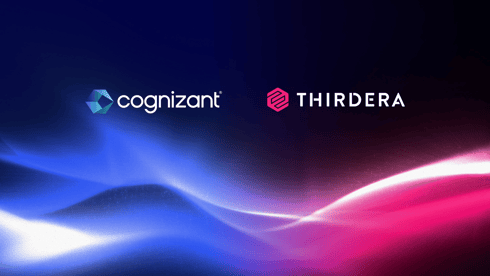Auto Retailer Enhances Operational Efficiency and...
This U.S.-based automotive retailed struggled with maintaining and enhancing their ServiceNow platform due to unreliable partnerships and talent gaps, ultimately transforming...
Read MoreThirdera generates transformation, digitization, and automation for our customers at the speed of NOW.
We help organizations adopt better patterns of work and get more from ServiceNow. Our team unlocks enterprise potential to elevate experiences across the world of work.
We help organizations adopt better patterns of work and get more from ServiceNow. Our team unlocks enterprise potential to elevate experiences across the world of work.

Exciting news! Thirdera and Cognizant Awarded Three ServiceNow Partner Specializations
Read more.jpg?width=500&height=276&name=filter%20group%20of%20people%20at%20desk%20laptop%20laughing%202021-10%20(1).jpg)


Insurance Provider Projects $75MM Gain in Business Value from Asset Management Transformation
Read more-1.jpeg?width=500&height=276&name=Indiana%20Department%20of%20Transportation%20Case%20Study%202023-03%20(3)-1.jpeg)
Government Agency INDOT Modernizes Its Constituent Service Model with CitizenKey
Read more.jpg?width=500&height=276&name=Multichannel%20pipette%20tips%20reaction%20mixture%20plastic%20wells%202022-05%20(1).jpg)

Balancing mission-driven goals with operational efficiency requires innovative solutions that can streamline processes, and enhance program delivery without straining budgets.

UN Agencies Rely on Thirdera and ServiceNow to Support the Ukrainian Aid Response
Read moreDigitize and automate workflows to enhance the customer experience, online and in-store.

.jpg?width=500&height=276&name=Servers%20data%20center%20room%20with%20bright%20speed%20light%202022-05%20(3).jpg)
Global SAP on Cloud Leader, Lemongrass, Embarks on Multi-Continent ITSM Overhaul
Read more

Stay up to date with the insights from ServiceNow experts and explore our blogs, news, case studies culture posts, partner updates and more.
Stay up to date with the insights from ServiceNow experts and explore our blogs, news, case studies culture posts, partner updates and more.


By now, it's a pretty safe bet that almost everyone in a tech-centric or leadership role is familiar with the term "digital transformation." The idea that digital transformation — which means leveraging digital technology across the business — is the key to success has been widespread for at least a decade.
However, traditional approaches to digital transformation aren't always enough. They often take years to deliver results. Businesses that need to navigate rapidly changing environments can't wait that long.
That's what makes the concept of compressed digital transformation so valuable. Compressed digital transformation focuses on leveraging technology to improve a specific process or component of a business, rather than transforming the organization as a whole. Because compressed digital transformations operate on a much faster timeline, they play a key role in helping businesses navigate turbulent times.
This article explains what compressed digital transformation means, why it's important, and how it complements, rather than replaces, traditional digital transformation strategies.
Compressed digital transformation is the use of digital technology to deliver specific, right-sized digital outcomes. Although every compressed digital transformation is unique, most are driven by:
Compressed digital transformation is distinct from traditional digital transformation because the latter focuses on across-the-board changes. A traditional digital transformation initiative might involve replacing all of a business's workstations with cloud-based virtual desktops, for example, as part of an effort to help support remote workers (who can access cloud-based desktops from anywhere) while also reducing the burden placed on the IT team (which would no longer have to maintain physical desktops). That type of change would require many months, if not years, of planning if you want to apply it to the thousands of workstations that exist inside an enterprise.
In contrast, with a compressed digital transformation, you could target a specific group of employees who stand to gain the most from migrating to cloud-based virtual desktops, then make the change only for them. Because the scale of the operation is much smaller, it can be implemented faster, and the business can start reaping the benefits much sooner.
Traditional digital transformation and compressed digital transformation are not an either-or proposition. Businesses can embrace both practices at the same time. They can use traditional digital transformation to pursue organization-wide changes, while also leveraging compressed digital transformation to achieve more targeted enhancements on a faster timeline, even as bigger-picture digital transformations play out.
As an example of what it means to leverage traditional digital transformation and compressed digital transformation simultaneously, consider a pharmaceutical company that wants to improve operational efficiency. Because the pharmaceutical industry is highly regulated, making rapid across-the-board changes to operational processes is virtually impossible. There are too many regulatory risks to assess and address. As a result, traditional digital transformation for this business would require years of analysis, planning, and testing before large-scale digital improvements can be implemented.
However, not every process in a pharmaceutical business is subject to intense regulation. The operational systems that the company uses for sales and marketing, for instance, are likely to be easier to update rapidly without running afoul of the regulatory processes that apply to drug manufacturing. The company could therefore take advantage of compressed digital transformation to increase the efficiency of sales and marketing in the short term.
The ability to achieve focused digital transformations rapidly would be valuable in any context. But it's especially critical today, given the unusual confluence of opportunities and challenges that organizations face.
We're living through an age of major technological disruption, with generative AI being just the latest example. These technological changes create important opportunities that businesses must embrace if they want to remain competitive. At the same time, organizations are navigating major challenges. Many are still figuring out what post-pandemic work looks like and answering questions like, "How many remote workers do we need long-term?" They're also grappling with an economic slowdown and the geopolitical uncertainty stemming from conflict in Europe.
Thus, if you operate a business today, you need to figure out how to innovate quickly in order to take advantage of new technologies before your competitors do. But you also need to play defense against the uncertainties that have defined the 2020s to date.
The long-time horizons of traditional digital transformation don't deliver change fast enough to allow organizations to achieve these goals. Compressed digital transformations do.
Traditional digital transformation isn't going away. But going forward, the most successful businesses will also leverage compressed digital transformation to complement traditional digital transformation initiatives. They'll identify specific opportunities and challenges that they can address in the short-term using digital technology to make improvements that help them get ahead of competitors and navigate a fast-changing world.
This article was originally published on ITPro Today
This U.S.-based automotive retailed struggled with maintaining and enhancing their ServiceNow platform due to unreliable partnerships and talent gaps, ultimately transforming...
Read MoreBanks, credit unions, investment firms, and brokerages have relied on AI-driven tools for a longer period of time that almost any other business sector. It makes sense—large...
Read MoreGrouping all patient care-related businesses under "the healthcare industry" is as oversimplified as describing our work as "something with AI." Thirdera, a Cognizant company,...
Read MoreThe ServiceNow Yokohama release became generally available on March 12, 2025, revolutionizing the NOW Platform with transformative enterprise AI capabilities. This release unifies...
Read More